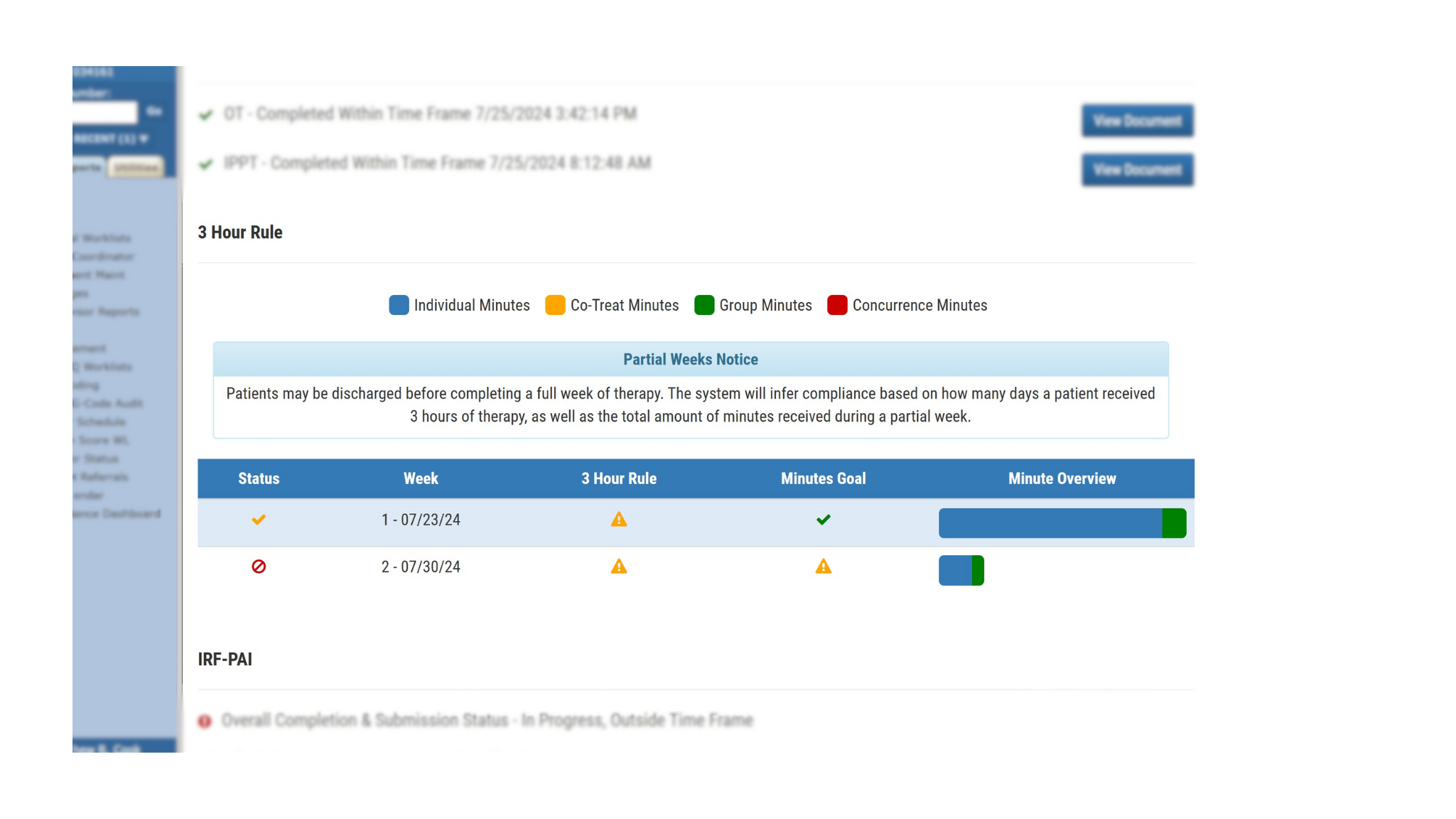What is the 3-Hour Rule?
Navigating Medicare requirements in Inpatient Rehabilitation Facilities (IRFs) can be challenging, especially when it comes to meeting the specific demands of the 3 Hour Rule. This rule is essential not only for maintaining compliance and securing reimbursement but also for ensuring high-quality patient care. Understanding and effectively implementing this rule is crucial, and modern technology, such as Systemax’s advanced software solutions, can play a significant role in easing this process. This article explores the 3-hour rule, outlines its challenges, and demonstrates how software solutions can aid in achieving compliance.
Understanding the 3-Hour Rule
What is the 3-Hour Rule?
The 3-Hour Rule is a Medicare requirement that mandates patients in IRFs to participate in a minimum of three hours of therapy per day, for five days a week. Alternatively, this intensive rehabilitation can be spread over seven days, depending on the patient’s individual needs and condition. The therapies involved can include physical therapy, occupational therapy, speech-language pathology, and prosthetics/orthotics training. This rule aims to ensure that patients receive intensive rehabilitation services that are crucial for their recovery.
Purpose and Types of Therapies Included
The primary purpose of the 3-Hour Rule is to provide a structured and intensive rehabilitation process that helps patients regain or improve their abilities and functions. By mandating a specific amount of therapy time, Medicare ensures that patients in IRFs receive consistent and effective treatment, which is vital for their rehabilitation journey.
Challenges in Complying with the 3-Hour Rule
Logistical and Operational Challenges
IRFs often face several challenges in ensuring compliance with the 3-Hour Rule. These include creating a balanced schedule that accommodates each patient's varied and intensive needs, managing staff availability, and adjusting to the day-to-day variability in patient health status. Additionally, the administrative burden of documenting and reporting compliance can be significant, detracting from the time healthcare providers can devote to patient care.
Common Compliance Issues
One of the main issues IRFs encounter is the scheduling conflicts that arise from trying to fit multiple therapy sessions into a patient’s day while also managing necessary medical treatments and rest periods. Moreover, staff shortages can further complicate compliance, making it difficult to provide the required hours of therapy consistently.
The Role of Technology in Facilitating Compliance
Streamlining Operations with Software Solutions
Advanced software solutions are increasingly vital in helping IRFs manage the complexities associated with the 3-Hour Rule. By automating scheduling, tracking therapy hours, and facilitating real-time adjustments, technology can significantly reduce the burden on staff and enhance the accuracy of compliance reporting.
Systemax’s Software Solutions
Systemax offers a range of products designed specifically to help healthcare facilities manage scheduling and compliance more effectively. These tools include features like automated scheduling algorithms, real-time updates to therapy schedules, and detailed reporting capabilities that make it easier to monitor compliance and make necessary adjustments promptly.
Benefits of Implementing Systemax Products
Enhanced Scheduling Efficiency
With Systemax’s software solutions, IRFs can automate much of the scheduling process, reducing the likelihood of human error and the administrative overhead associated with manual scheduling. This automation helps ensure that all patients receive the required therapy hours as mandated by Medicare.
Improved Patient Outcomes and Compliance
Systemax products not only streamline operations but also contribute to better patient outcomes by ensuring consistent therapy sessions. Furthermore, the ease of documentation and reporting facilitates smoother audits and compliance checks, securing Medicare reimbursement without additional hassle.
Case Studies
Several IRFs have successfully implemented Systemax’s solutions, leading to notable improvements in compliance rates and operational efficiency. For example, one facility reported a 25% decrease in the number of full-time employees required to create and manage the schedule, while simultaneously seeing a 10% improvement in the number of patients meeting the 3 hour rule.
The 3-hour rule is crucial for ensuring that patients in IRFs receive the intensive therapy necessary for their rehabilitation. While compliance can be challenging, leveraging technology like Systemax’s software solutions can significantly ease this burden. These tools not only make operations easier but also improve patient care and compliance outcomes.
If you’re looking to improve compliance with the 3-hour rule in your facility, consider exploring Systemax’s range of software solutions. Contact us today for a demonstration on how our products can transform your facility’s approach to patient care and regulatory compliance.


